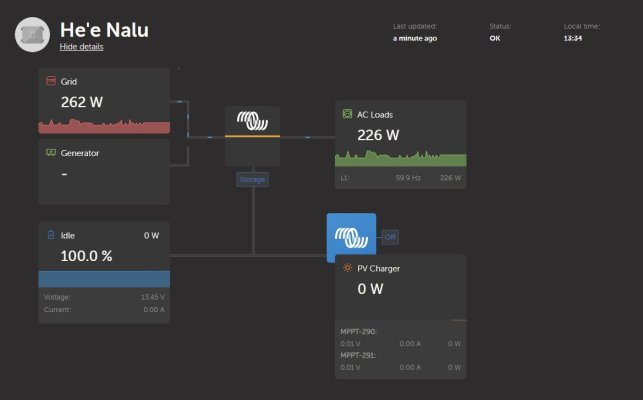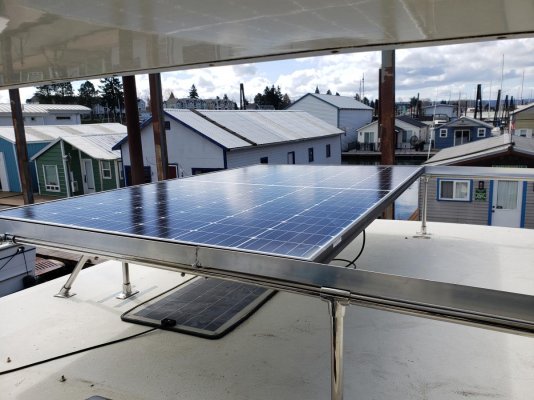This saga started because, when I left the boat for a couple of months, "kids" seem to enjoy unplugging the house side cable which, of my N46, that would shut down the 120vt fridge, spoiling all the food. This is a AT34 has 12vt fridge.
I had installed 2X140watt panels on my pilot house roof and a BlueSky controller.
Tied this to a 1500 watt inverter. I have 2 additional small inverters, a 200 and a 400watt, to support a couple of TVs and 2 additional 120vt outlets.
I also have a 12vt water maker that has not been used, to date. I had a brief discussion on 12vt vs 120vt. I figured with the main engine running, I can draw from the batteries to run the water maker as opposed to the necessity to run the generator to get 120vt.
I have a 12vt fridge.
I can support either the microwave, or a couple of 120vt outlets, if I am careful plus lights house lighting.
1 4D 200amp start battery
3 4D 200amp house batteries
Plus 1 12vt start battery for the 6kw gen.
The charger is 40amp.
If I am "nice", I can float for 2 or 3 days without running the gen. It is called "load management."
Of course, if I want to use the electric stove, hello generator. This will provide time to recharge the batteries and power to the electric HW heater. (The HW system is also tied into the main engine via a small heat exchanger too) The generator on the main engine is 150amp.
Could I have selected better stuff? Ah yup, you betchum Red Rider. Am I happy? I am happy and I hope the next owner will be happy too.
NOW, I am seeking recommendations on which ONE item should I replace to improve my system.








